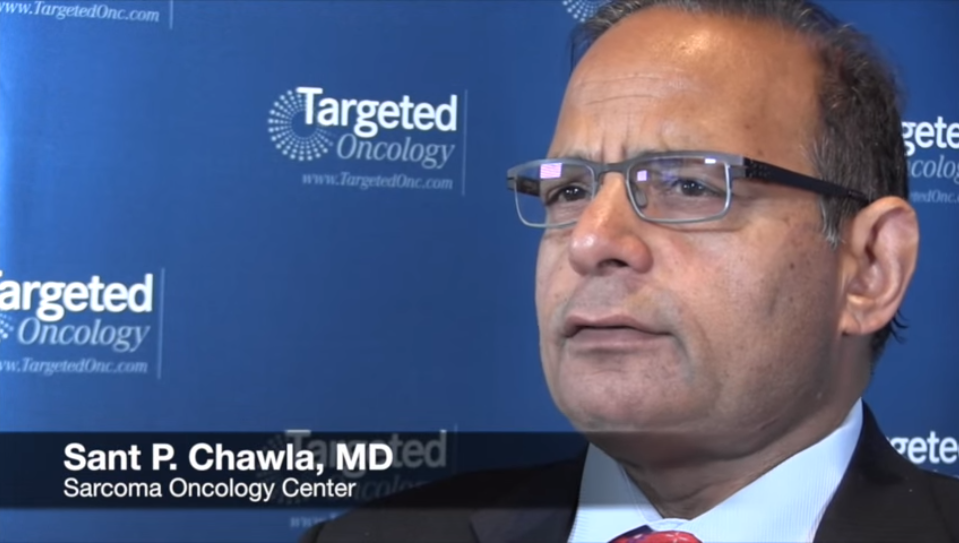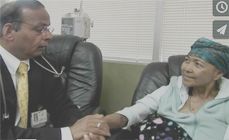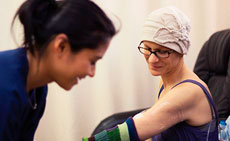Bone Cancer Treatment Explained
Bone cancer is rare but when it occurs, it destroys normal bone tissue and could metastasize (spread) to another part of the body. Most bone tumors are benign and cannot spread, but the presence of a tumor could result in a weakening of the bone and lead to a fracture or other problems.
Dr. Chawla and our team of oncologists are specialists in this type of sarcoma and known experts in the diagnosis and bone cancer treatment for subtypes. We partner with a team of renowned practitioners to develop the most advanced patient-centric treatment available. Patients receive personal and individualized attention from the most prestigious oncologists worldwide who are familiar with sarcoma’s numerous forms and understand how important limb preservation is for ensuring that each patient’s quality of life is protected.

There are several types of bone cancer and, depending on the tissue of origin, a tumor can occur in any part of the body:
- Osteosarcoma – often starts in the ends of bones and most often in the knee; the most common type of bone cancer found in 35% of bone cancer cases. Osteosarcoma in children occur for half of all osteosarcoma cases.
- Ewing’s – usually occurs in the middle area of bones most often in the upper arm, ribs, hip and thighbone. Occurs in 16% percent of bone cancer cases.
- Adamantinomas – a very rare cancer that appears in less than 1% of bone cancer cases. It almost always occurs in the bones of the lower leg (usually in the shinbone).
- Chondrosarcoma – forms in cartilage and usually appears around the pelvis, knee, shoulder, or upper part of the thigh. One of the most common bone cancers, it makes up 26% of bone cancer cases.
- Chordomas – most commonly develops in the sacrum (lower part of the spine), referred as the tailbone.
- Giant Cell Tumors of the bone (GCT) – usually begins in the knee, affects women more frequently than men.
The best strategy for early diagnosis is prompt attention to the signs and symptoms of this disease as well as knowing family medical history.
For more information, visit WebMD.com.
Bone Cancer Symptoms
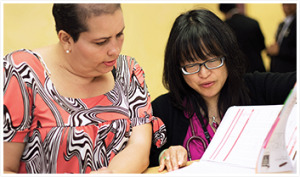 There are no special tests routinely performed by doctors to detect primary bone cancer and there are no obvious symptoms. Detection can occur when a doctor is looking at an X-ray of another problem, such as a sprain.
There are no special tests routinely performed by doctors to detect primary bone cancer and there are no obvious symptoms. Detection can occur when a doctor is looking at an X-ray of another problem, such as a sprain.
If symptoms do present themselves, it could include pain in the area of the tumor along with:
- Disrupted sleep
- Dull or achy feeling
- Pain that worsens with activity
- Weakened bone that breaks
Depending upon the type of bone cancer other symptoms could include:
- Double vision
- Fatigue and weight loss
- Numbness or tingling in extremities
- Unusual swelling around a bone
- Limping
The most common symptom of sarcoma bone cancer is pain which can be caused when a tumor spreads. Body stiffness or tenderness in the area of the cancer may also occur. However, many of these symptoms can be due to other conditions such as an injury or arthritis; therefore, a doctor must be seen immediately for proper diagnosis. For example: Ewing’s sarcoma treatment requires killing primary tumor cells and requires a multi-therapy approach.
A doctor will ask questions about symptoms and medical history and conduct an examination in addition to bloodwork and imaging tests. To confirm a diagnosis, a doctor will conduct a biopsy of tissue that is removed from the painful area and examined.
Treatment for Bone Cancer Sarcomas
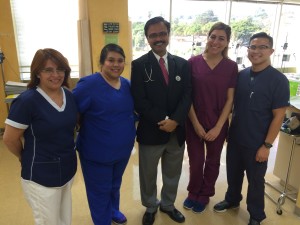 Cancer cells in bones are complex, requiring a team-oriented, multi-modal treatment. The Sarcoma Oncology Center collaborates with prominent surgeons, pathologists and radiation oncologists from institutions such as Cedars Sinai, M.D. Anderson, St. John’s, Stanford, UCLA, and USC. The Center develops a treatment plan based on the grade and stage of the tumor, progress of the cancer, any prior treatments, biopsy analysis and other unique factors. Oncologists at the Center are leaders in sarcoma research and have access to the most novel cancer drugs. As pioneers of the most advanced sarcoma clinical research trials, we have the capability to exceed standard care when needed and place patient satisfaction and limb preservation as a top priority in all cases.
Cancer cells in bones are complex, requiring a team-oriented, multi-modal treatment. The Sarcoma Oncology Center collaborates with prominent surgeons, pathologists and radiation oncologists from institutions such as Cedars Sinai, M.D. Anderson, St. John’s, Stanford, UCLA, and USC. The Center develops a treatment plan based on the grade and stage of the tumor, progress of the cancer, any prior treatments, biopsy analysis and other unique factors. Oncologists at the Center are leaders in sarcoma research and have access to the most novel cancer drugs. As pioneers of the most advanced sarcoma clinical research trials, we have the capability to exceed standard care when needed and place patient satisfaction and limb preservation as a top priority in all cases.
Clinical Trials at Sarcoma Oncology Center
Sarcoma Oncology Center physicians are actively involved in clinical trials of the newest drugs and partner with experts for the best treatment plan for each individual.
Dr. Chawla is the international principal investigator of Dasatinib (SARC009) which is the most effective treatment for advanced osteosarcoma. Clinical trials for this medicine were sponsored by the Sarcoma Alliance and the drug was approved by the FDA.
Contact the Sarcoma Experts for More Information
We are deeply committed to the emotional and physical well-being of our patients and offer an expert team of medical specialists for each patient’s treatment. Unlike other medical centers, we strive to ensure that our patients can not only overcome a deadly disease but can also return to their everyday lives with as much normalcy as possible, which means we strive to ensure as much limb preservation as possible in every single case. Please contact our center in Santa Monica at 310-552-9999 to schedule a consultation with one of our physicians.
Next, read about Common Pediatric Sarcomas.

